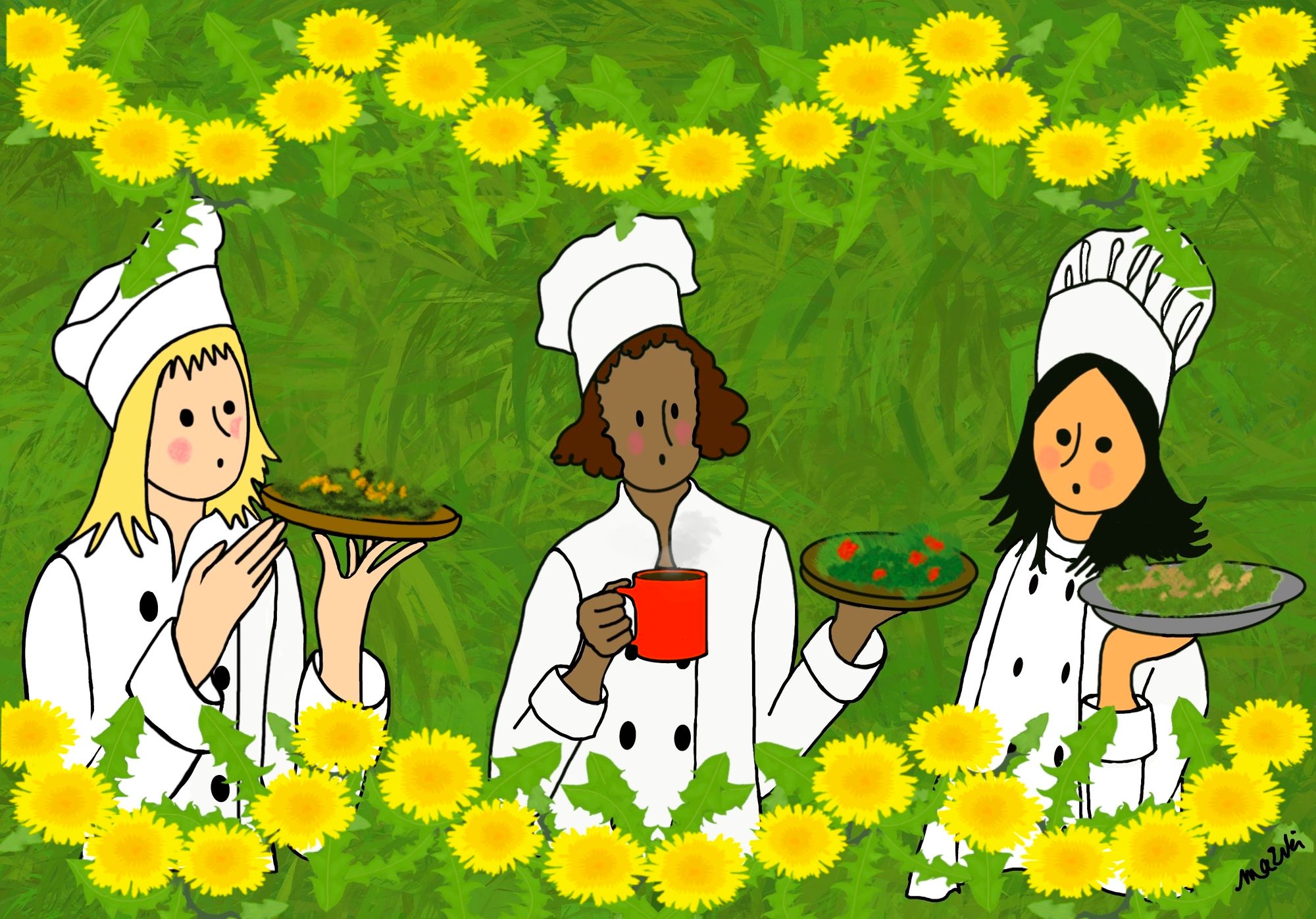Why do we hate lions? For reasons beyond any logic that I can see, most Westerners have been brainwashed by the lawn-care industry to believe that dandelions are posies non grata in our landscapes. Yet, they are a critical food source for native pollinators in the early season when little else is available – and as a bonus, they bloom again in late summer. They’re also a vitamin-packed culinary delight and a multi-purpose herbal remedy. Not bad for a “weed.”
In fact, the dandelion is so well-respected that it bears the Latin name Taraxicum officinale, roughly meaning “the official remedy for disorders.” It has many reported health benefits, including as a liver support, for alleviating kidney and bladder stones, and as a poultice for boils.

The University of Maryland Medical School website says this about dandelions:
“Preliminary animal studies suggest that dandelion may help normalize blood sugar levels and lower total cholesterol and triglycerides while raising HDL (good) cholesterol in diabetic mice. Researchers need to see if dandelion will work in people. A few animal studies also suggest that dandelion might help fight inflammation.”
You can buy dried and chopped dandelion root in bulk or in capsule form at most health-food stores or you can get it for free in your back yard, providing you don’t use lawn chemicals.
The English name for dandelion comes from the French dent de lion, or lion’s tooth, referring to the plant’s coarsely serrated leaves. The French common name, pis en lit, or pee-the-bed, reflects the diuretic action of the roots . . . which probably shouldn’t be taken at night!
Dandelion greens are best in early spring before they’re done flowering. Harvesting late in the season is like picking lettuce after it has bolted: edible, but not great. Young greens can be blanched and served in salad, or else boiled, but I like them best when chopped and sautéed. They go well in omelets, stir-fries, soups, casseroles, or any savoury dish for that matter.
Fresh roots can be peeled, thinly sliced, and sautéed. For me, dandelion crowns are the best. The reason they flower so early is that fully-formed bud clusters are tucked into the centres of the root crowns, whereas most flowers bloom on new growth. After removing the leaves, take a paring knife and excise the crowns, which are lightly steamed. They’re good with salt and butter, or a vinaigrette.
Roasted dandelion roots make the best coffee substitute I’ve ever used. Scrub fresh roots and spread them on an oven rack so they don’t touch, and then roast them at about 120°C (250°F) until they’re crispy and dark brown throughout. Use a food processor or mortar and pestle to grind them. Compared to coffee, use less of the ground root per cup.
The beverage tastes dandy, but as mentioned above, it’s more diuretic than coffee or black tea. I’ve never found this a problem, but if your morning commute is prone to traffic snarls, choose your breakfast drink wisely.
I haven’t tried dandelion wine, a tradition that dates back centuries in Europe, and so have no first-hand experience to report, but scads of recipes populate the Internet. Friends and family members have tried it, with negative and positive reviews pretty well split.
Given all the virtues of dandelions, it’s amazing how much time and treasure our culture puts into eradicating them. It seems to verge on an obsession with some people, who drench their lawn with selective broadleaf herbicides like 2,4-D, dicamba and mecoprop. These all come with serious health risks – to people and animals – not to mention hefty price tags.
For those who perhaps take the whole lion connection too far and can’t sleep at night if there are dandelions lurking on the premises, I’ll share a secret to getting them out of the landscape. Set the mower to cut at 10 cm, and leave the clippings on the lawn. By the second season, the number of weeds will be vastly reduced. This practice also lessens disease pressure, grub damage, and may eliminate the need for additional nitrogen.
I say we give tax breaks to lawns full of dandelions, and criminalize the use of herbicides for cosmetic purposes. It’s the least we can do for pollinators. Let’s stop trying to kill the only lion not in danger of extinction and learn to appreciate it more.
By Paul Hetzler, Former Cornell Extension educator.
Paul Hetzler loves dandelions and is working on his ailurophobia (fear of lions).. His most recent book, Head of the Class: Smart as Slime Mold: Nature's Funny Bone Revealed is available on Amazon.com and Amazon.ca.
Marie-Anne Erki
Marie-Anne Erki, TI Life illustrator and accomplished artist. She is also Professor Emeritus of Civil Engineering at Canada's Royal Military College where she taught for twenty years. She has already produced individual illustrations for Patrick Metcalf's The Witch of Wellesley Island (see STORIES+) and illustrated some of Paul Hetlzer's past articles.
Editor's Note: How is it that Paul Hetzler seems to identify all the "touchstones" of the day? Last month's V for vaccine word and this month those dreaded lawn thingies... I happen to love them, but my husband does not. What is one to do?
Posted in: Volume 17, Issue 6, June 2022, Nature
Please click here if you are unable to post your comment.
